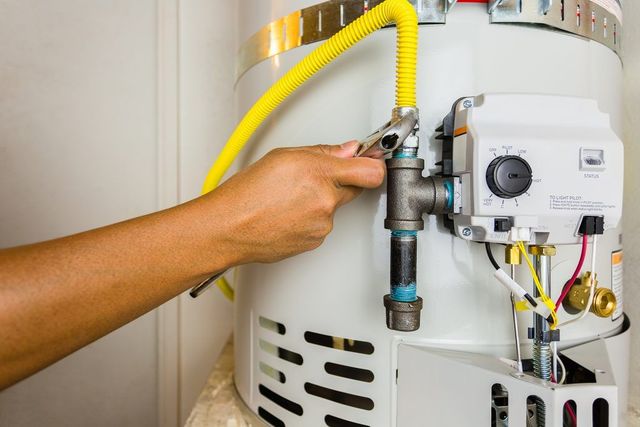Useful Techniques for Caring for Your Home's Hot Water SystemEssential Care Strategies for Your Home's Hot Water System
Useful Techniques for Caring for Your Home's Hot Water SystemEssential Care Strategies for Your Home's Hot Water System
Blog Article
Just how do you actually feel in relation to Tips on Maintaining a Water Heater?

Warm water is essential for everyday convenience, whether it's for a refreshing shower or cleaning meals. To guarantee your warm water system runs efficiently and lasts longer, regular maintenance is crucial. This write-up offers functional pointers and insights on just how to keep your home's hot water system to prevent interruptions and expensive repairs.
Introduction
Keeping your home's warm water system might seem complicated, yet with a few easy steps, you can guarantee it runs efficiently for several years to come. This guide covers whatever from comprehending your warm water system to do it yourself maintenance ideas and recognizing when to call professional aid.
Relevance of Preserving Your Warm Water System
Routine upkeep not just expands the life-span of your warm water system yet additionally guarantees it runs successfully. Disregarding upkeep can bring about lowered performance, greater power bills, and also early failing of the system.
Indications Your Hot Water System Requirements Maintenance
Understanding when your hot water system needs attention can prevent major issues. Look out for indicators such as irregular water temperature level, weird sounds from the heater, or rusty water.
Flushing the Water Heater
Flushing your hot water heater gets rid of debris accumulation, enhancing effectiveness and prolonging its life.
Checking and Changing Anode Rods
Anode poles stop rust inside the tank. Inspecting and changing them when broken is vital.
Complex Concerns Requiring Specialist Aid
Instances include significant leaks, electrical issues, or if your water heater is regularly underperforming.
Routine Professional Maintenance Benefits
Professional upkeep can consist of detailed examinations, tune-ups, and guaranteeing compliance with safety standards.
Inspecting and Readjusting Temperature Level Setups
Changing the temperature settings makes certain optimum efficiency and security.
DIY Tips for Upkeep
You can execute a number of maintenance tasks on your own to keep your hot water system in leading problem.
Checking for Leaks
Regularly evaluate pipelines and connections for leaks, as these can bring about water damages and higher bills.
Recognizing Your Warm Water System
Before diving right into maintenance tasks, it's handy to comprehend the standard elements of your warm water system. Commonly, this includes the water heater itself, pipelines, anode poles, and temperature level controls.
Month-to-month Upkeep Tasks
Routine regular monthly checks can help catch small concerns prior to they intensify.
Evaluating Stress Alleviation Valves
Checking the pressure relief valve guarantees it works properly and protects against extreme pressure buildup.
Shielding Pipelines
Protecting hot water pipelines decreases heat loss and can conserve power.
When to Call an Expert
While do it yourself upkeep is useful, some issues call for professional experience.
Final thought
Regular upkeep of your home's hot water system is necessary for efficiency, durability, and cost financial savings. By complying with these tips and understanding when to look for professional assistance, you can ensure a trustworthy supply of warm water without unforeseen interruptions.
How to Maintain an Instant Hot Water Heater
Before tinkering with your hot water heater, make sure that it’s not powered on. You also have to turn off the main circuit breaker and shut off the main gas line to prevent accidents. Also turn off the water valves connected to your unit to prevent water from flowing into and out of the appliance. 2. When you’re done, you have to detach the purge valves’ caps. These look like the letter “T” and are situated on either side of the water valves. Doing so will release any pressure that has accumulated inside the valves while at the same time avoid hot water from shooting out and burning your skin. 3. When the purge valves’ caps are removed, you have to connect your hosing lines to the valves. Your unit should have come with three hoses but if it didn’t, you can purchase these things from any hardware or home repair shops. You can also get them from retail stores that sell water heating systems. Read the user’s manual and follow it to complete this task properly. When the hosing lines are connected, open the purge port’s valves. 4. You should never use harsh chemical cleaners or solutions when cleaning your unit. Make use of white vinegar instead. It should be undiluted and you’ll probably use about 2 gallons. 5. Now flush your water heater. This task should probably take about 40 minutes. We can’t give you specific directions for this because the procedure is carried out depending on the type, model and brand of your heater. With that being said, refer to the user’s manual. 6. When you’re done draining the unit, you have to turn off the purge port valves again. Remove the hosing lines that you earlier installed on each of the water valves. Put the valve caps (purge port) back in their respective places and be very careful so as not to damage the rubber discs that are found inside these caps. 7. Now that everything’s back in place, check your user’s manual again to find out how to reactivate your water heating system. 8. Once it is working, turn one of your hot water faucets on just to let air pass through the heater’s water supply pipes. Leave the tap on until water flows smoothly out of it. https://www.orrplumbing.com/blog/2014/september/how-to-maintain-an-instant-hot-water-heater/

I hope you enjoyed reading our post about Tips For Maintaining Your Hot Water Heater. Thank you for taking the time to browse our post. Don't hesitate to take the opportunity to promote this blog entry if you enjoyed reading it. Bless you for your time. Come back soon.
Book Services Report this page